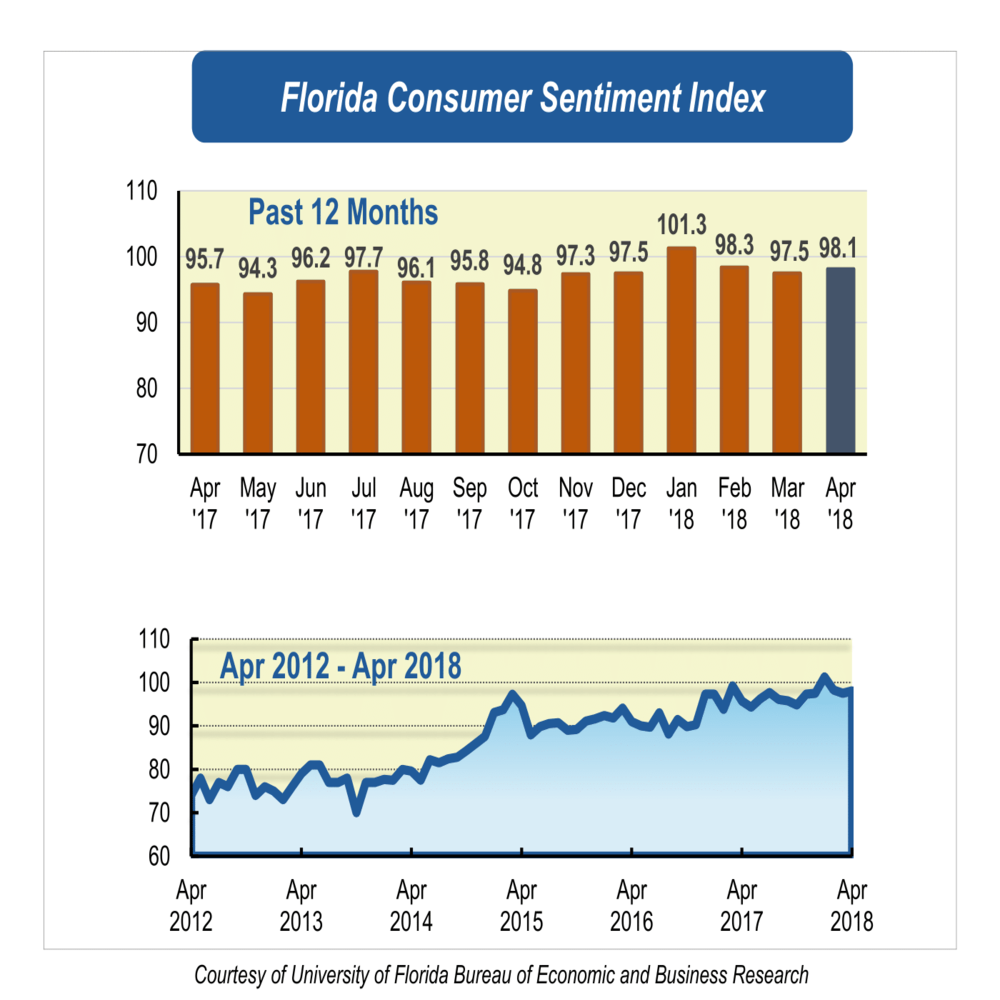Consumer sentiment in Florida increases for the first time since January

After two months of decline, consumer sentiment among Floridians increased six-tenths of a point in April to 98.1 from a revised figure of 97.5 in March.
Among the five components that make up the index, three increased and two decreased.
“Overall, Floridians are slightly more optimistic. The gain in April’s confidence came from the perceptions and expectations regarding Floridians’ personal financial situation. These numbers increased for women as well as those aged 60 and older,” said Hector H. Sandoval, director of the Economic Analysis Program at UF’s Bureau of Economic and Business Research.
Perceptions of personal financial situations now compared with a year ago rose 5.5 points from 91 to 96.5, the greatest increase of any component this month. Similarly, perceptions as to whether this is a good time to buy major household items like appliances increased 3.1 points from 101.1 to 104.2.
“Increases in these two components show that opinions regarding the current economic condition improved among Floridians in April,” Sandoval said.
Of the three components that represent expectations about future economic conditions, one increased and two decreased. Expectations of personal financial situations a year from now went up 3.2 points from 105.9 to 109.1. In contrast, expectations of U.S. economic conditions over the next year plummeted 6 points from 96.4 to 90.4, the greatest decline in this month’s reading. Additionally, expectations of U.S. economic conditions over the next five years decreased 2.9 points from 93.3 to 90.4.
“Despite the large decline in short- and long-run confidence in the national economy, opinions are split among the population by age. Those under age 60 have strong negative expectations, while those aged 60 and older hold positive opinions,” Sandoval said.
Overall, economic indicators in Florida continue to be positive. The labor market in Florida continues to strengthen, with more jobs added on a monthly basis. Since January 2017, labor force participation reached 10 million, and with the exception of December 2017, participation has increased every month. Regardless of increased participation, the unemployment rate has remained unchanged at 3.9 percent for the past seven months.
In March, 173,100 jobs were added statewide, a 2 percent increase compared with a year ago. Among all industries, professional and business services gained the most jobs, followed by leisure and hospitality, construction, and education and health services.
Additionally, personal income in Florida increased 3.8 percent on average in 2017, compared with 3.1 percent for the nation, according to estimates by the Bureau of Economic Analysis. Net earnings -- the sum of wages and salaries, supplements to wages and salaries, and proprietors' income -- contributed most to this increase in personal income. Construction was the largest contributor to the earnings increase in Florida, growing 8.7 percent compared with 5.2 percent for the nation.
“Overall, consumer confidence is increasing, but expectations of future economic conditions may predict a significant change in this trend,” Sandoval said.
Conducted Apr. 1-26, the UF study reflects the responses of 361 individuals who were reached on cellphones, representing a demographic cross section of Florida.
The index used by UF researchers is benchmarked to 1966, which means a value of 100 represents the same level of confidence for that year. The lowest index possible is a 2, the highest is 150.
Details of this month’s survey can be found at http://www.bebr.ufl.edu/csi-data